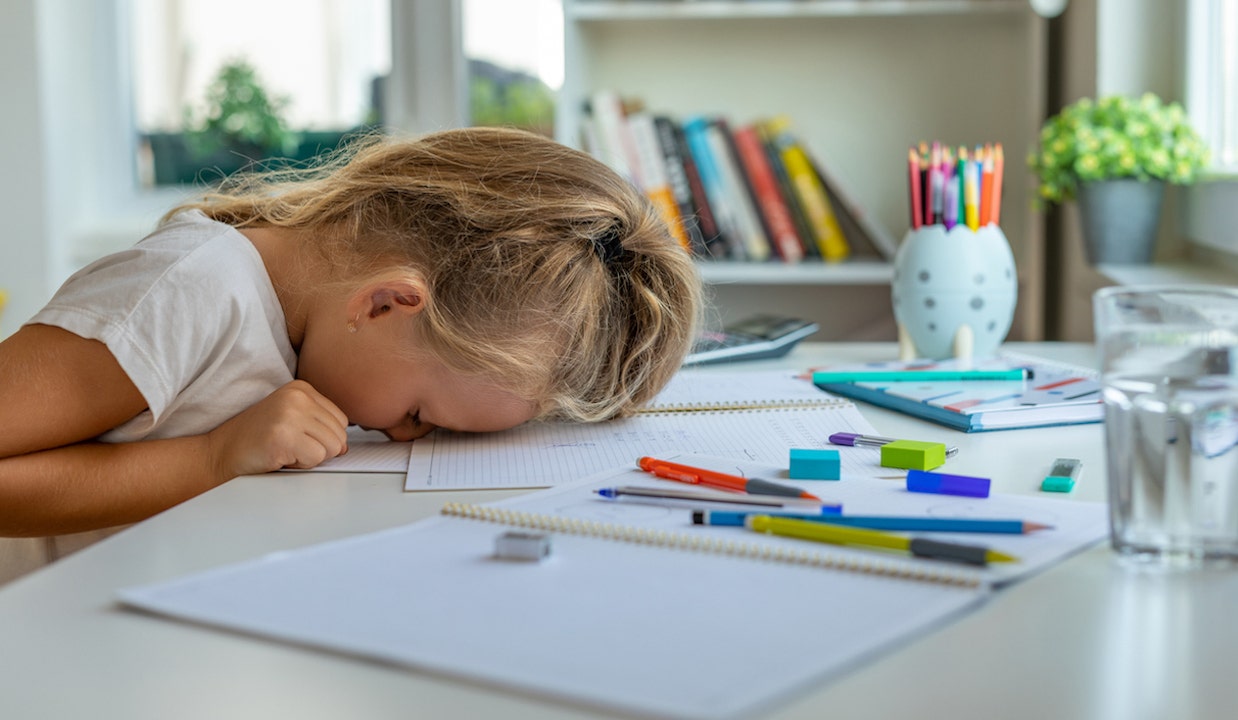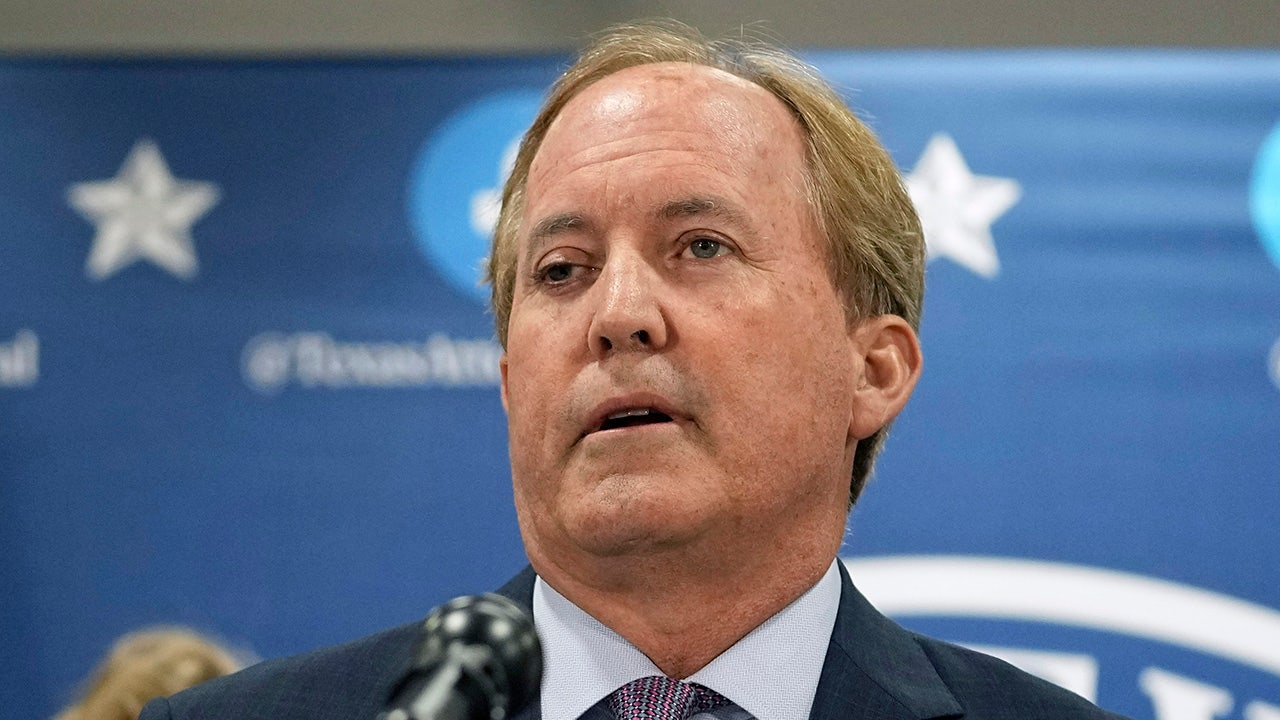Health
ADHD drug shortage could make back-to-school season challenging, expert says: ‘Widespread impact’

Heading into back-to-school season, the ongoing shortage of ADHD medications has sparked concern among some parents of children who have attention-deficit/hyperactivity disorder.
The Food and Drug Administration (FDA) first announced the medication shortage in October 2022.
New data from SingleCare, an online prescription savings service based in Columbus, Ohio, showed there was a 33% spike in ADHD medication fills for children between 6 and 17 years of age in August-September 2022, as compared to June-July 2022 ahead of the school season.
Given today’s shortage, many of those children may not have access to the medication for the start of the 2023-2024 school year.
ADHD NUMBERS CLIMBING DRAMATICALLY IN THE U.S., ESPECIALLY AMONG WOMEN, SAYS NEW STUDY
Although drug shortages are usually caused by manufacturing disruptions, unprecedented demand is another big factor in the scarcity of ADHD medications.
That’s according to Dr. Jennifer Bourgeois, PharmD, a pharmacy and health expert at SingleCare.
Heading into back-to-school season, the ongoing shortage of ADHD medications has sparked concern among some parents of children with attention-deficit/hyperactivity disorder. (iStock)
“Because Adderall is a Schedule II drug, there are limitations on its production by the FDA and DEA,” she told Fox News Digital.
“The active ingredients in the stimulant medications used to treat ADHD are strictly controlled by the DEA,” she added.
“When the pharmaceutical companies try to scale up production to meet the increased demand, I suspect the DEA regulatory process may be adding to the delay.”
Adderall (amphetamine mixed salts) is the medication that’s most affected by the shortage, Bourgeois said, along with variations of methylphenidate, sold under the brand names Ritalin or Concerta.
MOM IN NEW ORLEANS SAYS ‘ADHD CHANGED MY LIFE,’ REVEALS HOW DIAGNOSIS HELPED HER THRIVE
“Adderall is one of the most commonly prescribed ADHD medications in the U.S., so this shortage is causing widespread impact,” she said.
While some pharmaceutical and manufacturing companies predict the shortage will end between August and December 2023, it is still unclear when the medication will be widely available again, the doctor noted.
How the shortage will impact the back-to-school season
The shortage of ADHD medications is not just impacting the patient — it’s also affecting the families and practitioners, Bourgeois said.
“Parents are driving long distances and calling a multitude of pharmacies just to obtain these medications,” she said.
“Practitioners are having to reissue prescriptions to alternative pharmacies or change medications to another option in that same class or a different class entirely.”

The Food and Drug Administration (FDA) announced the medication shortage in October 2022. Some experts think the shortage will end between August and December 2023, but the timing for wide availability again is unclear. (iStock)
In the worst-case scenario, kids with ADHD may have to go without their medication completely, leading to worsened symptoms and making it more difficult for the parents and teachers to manage.
“This could not only impact patients’ grades in school, but could also create concerns for classmates of these children,” Bourgeois told Fox News Digital.
“Parents are driving long distances and calling a multitude of pharmacies just to obtain these medications.”
Parents should plan ahead when filling medications for ADHD, the doctor recommended, as there is typically an increased demand in August as kids prepare to return to school.
“Understand that pharmacies may not be able to fill medications on the same day, so I advise dropping off your prescription at least two days before the medication is needed,” she suggested.

Adderall (amphetamine mixed salts) is the medication that is most affected by the shortage. (Jb Reed/Bloomberg via Getty Images)
“Consult with your health care provider regarding possible substitutions if the medication is unavailable,” she added.
Parents may be tempted to give lower doses of ADHD medications in an attempt to make them last longer — but Bourgeois warned that this approach may have negative implications on the patient.
NEW REPORT SUGGESTS ‘PANIC BUYING’ OF MEDICATIONS BY PATIENTS AND PROVIDERS CAUSED DRUG SHORTAGES
“Parents should work with the pharmacist and practitioner to create a solution that supports the needs of the patient, such as trying a different medication or taking ½ of a 10 mg tablet, versus 1 whole 5 mg tablet,” she suggested.
Because each child will have different symptoms when going without medication, the approach should be tailored to each individual, the doctor said.
Non-drug alternatives to managing ADHD
Dr. Willough Jenkins, inpatient director of psychiatry at Rady Children’s Hospital in San Diego, typically prescribes non-drug ADHD treatments to younger, preschool-aged children, and offers a mix of drug and non-drug treatments to school-age children.
“Evidence shows that combining treatment (forms) is the most effective course of action.”
“Parents often think that drugs are the only treatment method — but in reality, there is no one-size-fits-all approach,” he told Fox News Digital.
“Evidence shows that combining both forms of treatment is the most effective course of action.”
VAPES DISGUISED AS SCHOOL SUPPLIES WORRY AUTHORITIES AND PROMPT WARNINGS AS ITEMS POUR INTO US FROM CHINA
For non-drug treatment, Jenkins pointed to several alternative methods.
With cognitive behavioral therapy (CBT), children learn strategies to manage the difficulties associated with ADHD, including emotion regulation, social anxiety and self-esteem issues, he said.
“Despite commonly held beliefs, ADHD is not just a lack of focus and attention,” Jenkins added.
Parent training and education is another important non-drug method.

“Despite commonly held beliefs, ADHD is not just a lack of focus and attention,” an expert told Fox News Digital. (iStock)
“There are a lot of programs aimed at supporting parents of children with ADHD, which is important because many kids with ADHD have behavioral issues,” the doctor said.
“Parents may learn strategies such as ‘triple P’ — positive parenting program — that make it easier to manage conflict with their child.”
Schools can also provide support through classroom accommodations and individualized education programs (IEPs).
“Ensuring the child has regular physical exercise of at least 30 minutes a day can make a huge difference.”
It’s also important to “go back to the basics,” Jenkins said, with a focus on healthy daily habits.
“Ensuring the child has regular physical exercise of at least 30 minutes a day can make a huge difference,” he said. “Getting enough sleep — 10 to 12 hours for children — is crucial, but that can be difficult for some kids with ADHD, as their brain won’t wind down at night.”
Many sleeping issues can be remedied by enforcing sleep hygiene, consistent sleeping patterns and reduced screentime at night, Jenkins suggested.

The FDA pledged to “do all we can to prevent stimulant drug shortages, limit their impact and resolve them as quickly as possible.” (iStock)
Mindfulness and meditation techniques can also help children with ADHD manage difficult emotions.
“By learning these skills from a therapist, children can reduce impulsivity and pause before they act,” Jenkins noted.
When it comes to food, the doctor said that although there is no specific evidence-based diet for ADHD management, a balanced diet incorporating protein, fruits and vegetables is recommended.
CLICK HERE TO SIGN UP FOR OUR HEALTH NEWSLETTER
ADHD coaching is another non-drug treatment method that can be useful for older, school-aged children, Jenkins said.
With this approach, a coach teaches social or organizational skills, such as how to plan ahead, make lists and set reminders.
“Parents often think drugs are the only treatment method — but in reality, there is no one-size-fits-all approach.”
“It can be challenging for some families to get therapists and have the financial resources or time to access alternative methods,” Jenkins said. “For example, ADHD coaching is not usually included with insurance.”
He also said, “Fortunately, online tools are often effective and are making non-drug treatments more accessible.”

Although there’s no specific evidence-based diet for ADHD management, doctors recommend a balanced diet incorporating protein, fruits and vegetables. (iStock)
The FDA is also working to provide alternative treatment options, including a “game-based digital therapeutic” designed to improve attention function in children with ADHD, according to a letter the agency published on August 1.
In the letter, the agency also detailed the steps it is taking to help resolve the shortage, including working with drug manufacturers to make sure they’re producing the full amount as permitted by the DEA.
“We are calling on key stakeholders, including manufacturers, distributors, pharmacies and payors, to do all they can to ensure access for patients when a medication is appropriately prescribed,” the statement said.
The FDA also pledged to “do all we can to prevent stimulant drug shortages, limit their impact and resolve them as quickly as possible.”
Around six million children between 3 and 17 years of age have received an ADHD diagnosis, per CDC data.

Health
How Much Weight Can You Safely Lose in a Month? Here’s What Doctors Say

Use left and right arrow keys to navigate between menu items.
Use escape to exit the menu.
Sign Up
Create a free account to access exclusive content, play games, solve puzzles, test your pop-culture knowledge and receive special offers.
Already have an account? Login
Health
Zone 2 training: The trending workout that burns fat without intense exercise

An exercise that takes a more mild approach while offering all the fat-burning benefits of a more grueling workout might sound too good to be true.
But some claim that the trending “Zone 2” training, commonly known as the “fat-burning zone,” offers just that.
What is this form of exercise — and can it work for anyone?
STUDY REVEALS EXERCISING EVERY DAY MAY NOT BE NECESSARY: ‘BETTER THAN NONE’
“Zone training is generally defined by someone’s proximity to their maximum heart rate,” Carmine Ciliento, a fitness manager at Crunch Fitness in New York, told Fox News Digital.
The zone-based training method measures how hard the body is working and how it’s using energy.
Zone training is based on the exerciser’s proximity to their maximum heart rate. (iStock)
Different zones burn different compounds in the body, according to Ciliento.
“Zone 2 is working out at about 60% to 70% of someone’s maximum heart rate,” he said.
STAY FIT IN YOUR 40S AND BEYOND WITH THESE SMART WORKOUT TIPS
The most common way to determine heart rate is to subtract a person’s age from 220. This means a 55-year-old would have an approximate maximum heart rate of 220 – 55 = 165 bpm.
Wearable heart rate monitors and sports watches can be used to track heart rate while working out, and many cardiovascular fitness machines also calculate it.
Benefits of Zone 2 training
When someone is working out, their heart rate zone indicates their level of exertion and what they’re utilizing for energy, according to exercise physiologist Chris Travers via Cleveland Clinic.
JILLIAN MICHAELS REVEALS SIMPLE WORKOUT TO EXTEND YOUR LIFESPAN ‘UP TO 7 YEARS’
The higher the heart rate gets, the more carbohydrates and protein the body burns for energy, and the less it relies on fat for fuel.
While exercising in Zone 2, roughly 65% of the calories burned are from fat, according to Cleveland Clinic.

While exercising in Zone 2, roughly 65% of the calories burned come from fat. (iStock)
“Zone 2 is especially valuable because it allows you to add cardio volume to your training without overstressing your body,” Ciliento told Fox News Digital.
“For people just starting out, anything above Zone 2 may be too intense, so a lot of their work will most likely need to begin in this zone.”

“Zone 2 is especially valuable because it allows you to add cardio volume to your training without overstressing your body,” an expert said. (iStock)
Athletes and those who are already into fitness may not reap as many benefits from Zone 2 as those who are just starting out.
Ciliento, who is an endurance athlete, said he sees Zone 2 as a great tool for recovery efforts.
Getting to Zone 2
Cleveland Clinic defines Zones 1, 2 and 3 as moderate-intensity aerobic activity.
In Zone 2, you should be able to hold a “light conversation,” but may need to take a break from talking to take a breath now and then, according to Cleveland Clinic.
CLICK HERE TO SIGN UP FOR OUR HEALTH NEWSLETTER
This is sometimes referred to as the “talk test.”
When in Zone 2, Travers told Cleveland Clinic, “You’re in a moderately easy zone. Not everyone should stress about the numbers, especially if that becomes a barrier to enjoying exercise.”

In Zone 2, you should be able to hold a “light conversation,” but may need to take a break from talking to take a breath now and then, according to Cleveland Clinic. (iStock)
For most people, a brisk walk will get them into Zone 2, Ciliento noted.
For more Health articles, visit www.foxnews.com/health
Other moderate-intensity aerobic exercises include biking, swimming or even mowing the lawn, according to Mayo Clinic.
Health
See the Weight Loss Apps That Helped One Woman Lose 118 Pounds

Use left and right arrow keys to navigate between menu items.
Use escape to exit the menu.
Sign Up
Create a free account to access exclusive content, play games, solve puzzles, test your pop-culture knowledge and receive special offers.
Already have an account? Login
-

 World1 week ago
World1 week agoSevere storms kill at least 21 across US Midwest and South
-

 News1 week ago
News1 week agoMaps: 3.8-Magnitude Earthquake Strikes Southern California
-

 News1 week ago
News1 week agoWatch: Chaos as Mexican Navy ship collides with Brooklyn Bridge, sailors seen dangling – Times of India
-

 Politics1 week ago
Politics1 week agoTexas AG Ken Paxton sued over new rule to rein in 'rogue' DAs by allowing him access to their case records
-

 World1 week ago
World1 week agoPortuguese PM’s party set to win general election, fall short of majority
-

 Politics1 week ago
Politics1 week agoAfghan Christian pastor pleads with Trump, warns of Taliban revenge after admin revokes refugee protections
-

 Politics1 week ago
Politics1 week agoTrump, alongside first lady, to sign bill criminalizing revenge porn and AI deepfakes
-

 News1 week ago
News1 week agoVideo: One Person Dead in Explosion Outside Palm Springs Fertility Clinic















